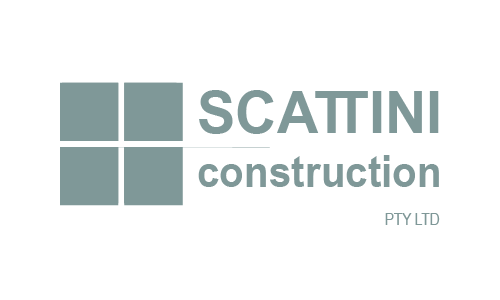nu .
How to Speed Up Development Approvals: Tips for Every Australian State

How to Speed Up Development Approvals: Tips for Every Australian State
Getting a development approved quickly is critical for maximising return on investment.
Whether you’re building a mixed-use precinct, a retail centre, an industrial estate, or a boutique office building, delays in development approvals (DA) can cost serious time, money, and momentum.
In Australia, each state and territory has different processes, policies, and pressures that affect the speed of development approvals.
The good news? With the right approach tailored to each location — and the right strategy for each type of project — you can significantly fast-track the process.
Here’s an in-depth guide to speeding up development approvals across Australia in 2025, covering key tactics and state-by-state tips.
Why speeding up approvals matters more than ever
In a tightening commercial and industrial market, speed-to-market gives developers an enormous advantage.
Delays in DA can cause:
Increased holding costs (finance, land tax, council rates)
Construction price escalation risks
Lost tenant or buyer opportunities if projects miss market windows
Compromised project profitability due to shifting market conditions
Today’s environment demands sharper planning, earlier engagement with authorities, and a proactive approval strategy.
General strategies to fast-track development approvals
Regardless of state or project type, there are universal tactics that will help speed up your DA process:
Pre-application meetings: Engage with council and planning authorities early. Address concerns before formal submission.
Clear, compliant documentation: Submitting complete, high-quality plans and reports reduces stop-start delays.
Local expert consultants: Use local planners, architects, engineers, and lawyers familiar with council processes.
Community engagement: Where applicable, conduct early community consultation to avoid costly objections later.
Stage approvals if needed: For larger projects, seek staged approvals to commence work earlier while refining later stages.
Design to zoning: Maximise use within existing zoning controls to minimise the need for variations, which trigger extended review.
Fast-tracking tips by development type
Mixed-use developments
Engage early with multiple departments (traffic, heritage, design review panels).
Demonstrate how the mix of uses supports council strategic plans for urban renewal.
Provide strong economic and community benefit cases to offset density or height variations.
Industrial estates
Focus on access, traffic management, and environmental compliance.
Choose sites already zoned General or Light Industrial to avoid re-zoning requirements.
Pre-negotiate conditions around B-double access, stormwater, and landscaping to prevent last-minute plan changes.
Retail and bulky goods centres
Deliver detailed retail impact assessments upfront to address competition concerns.
Highlight local employment creation and activation of underused land.
Pre-plan signage, parking layouts, and loading docks — retail DAs often stall due to poor operational detailing.
Commercial office projects
Emphasise sustainability (NABERS ratings, Green Star design) to align with council climate goals.
Integrate end-of-trip facilities, active transport links, and street activation features.
Minimise overshadowing and wind impacts, which slow down inner-city DA reviews.
Residential and townhouse projects
Address overshadowing, privacy, and traffic issues at concept design stage.
Align your project with density targets in local structure plans.
Pre-consult with neighbours where possible to prevent objections.
Tips for speeding up approvals by Australian State
New South Wales (NSW)
Key challenges: Complex layered approvals, particularly in Sydney metro councils.
Fast-track tips:
Use the Complying Development pathway (CDC) wherever possible for industrial and small commercial projects.
For larger projects, engage with council strategic planners to demonstrate alignment with LEPs (Local Environmental Plans) and DCPs (Development Control Plans).
Prepare detailed SEEs (Statements of Environmental Effects) that pre-empt issues raised in the DA review.
Extra tip: If your project exceeds $30M value, explore the State Significant Development (SSD) pathway for centralised approval.
Victoria (VIC)
Key challenges: Design review panels and public objections.
Fast-track tips:
Seek pre-application meetings with councils like City of Melbourne, Maribyrnong, or Greater Dandenong early to address Urban Design issues.
Submit full traffic, ESD (Environmentally Sustainable Design), and heritage reports upfront.
Ensure all public notice material (signage, mailouts) is perfect to prevent re-notification delays.
Extra tip: For industrial and retail in growth corridors (like Officer, Cranbourne, Werribee), aligning with PSPs (Precinct Structure Plans) helps fast-track approvals.
Queensland (QLD)
Key challenges: Multiple-layered referrals (e.g., state-controlled roads, flood overlays).
Fast-track tips:
Lodge pre-lodgement meetings with EDQ (Economic Development Queensland) or council Growth Management divisions.
Target Priority Development Areas (PDAs) where planning schemes allow streamlined assessments.
Submit referral agency responses early for state-controlled sites (like Logan Motorway access or Port of Brisbane proximity).
Extra tip: In Olympic-linked suburbs (Woolloongabba, Roma Street, Albion), councils are actively fast-tracking compliant DAs.
Western Australia (WA)
Key challenges: Referral agencies (Heritage Council, Main Roads WA) slowing review timelines.
Fast-track tips:
Work with local Development Assessment Panels (DAPs) early if your project meets size thresholds ($2M–$20M+ depending on region).
Highlight employment creation, innovation, or strategic infrastructure alignment in applications.
Stage large developments into manageable DA packages.
Extra tip: Industrial projects near Latitude 32, Kwinana, and Neerabup benefit from simplified zoning pathways.
South Australia (SA)
Key challenges: Layered assessment under the Planning and Design Code.
Fast-track tips:
Use the ePlanning portal for submissions and tracking.
Align developments with Activity Centres or Employment Zones to access performance-assessed pathways.
Focus heavily on urban design quality in Bowden, Tonsley, and Port Adelaide growth corridors.
Extra tip: Defence-linked industrial DAs in northern Adelaide are receiving priority handling due to national interest.
Tasmania (TAS)
Key challenges: Heritage overlays and small council resource limitations.
Fast-track tips:
Submit complete, detailed applications — incomplete DAs are a common delay cause.
Engage private planning consultants with deep local council experience (especially outside Hobart).
Highlight alignment with tourism, freight, or housing shortage solutions to gain political support.
Extra tip: Cambridge and Brighton industrial corridors are highly receptive to clean, detailed DAs.
Northern Territory (NT)
Key challenges: Climate resilience, environmental overlays.
Fast-track tips:
Address cyclonic design standards, flood mapping, and fire access at design stage.
Engage with the Development Consent Authority (DCA) for streamlined large project approvals.
Pre-consult Defence and Infrastructure NT if your project services these sectors.
Extra tip: Darwin’s industrial land near East Arm and Berrimah is a strategic fast-track zone.
Australian Capital Territory (ACT)
Key challenges: Design quality, sustainability mandates.
Fast-track tips:
Engage early with the National Capital Authority (NCA) if applicable.
Prioritise strong sustainability credentials (minimum 5-Star Green Star) for commercial projects.
Address public realm and active transport integration to satisfy key ACT planning themes.
Extra tip: Canberra’s industrial and mixed-use hubs (Fyshwick, Mitchell, Hume) are proactively zoned for growth.
Conclusion: Speed is strategy
Across Australia, development approval timelines are tightening — and competition is rising.
Early engagement, strong documentation, compliance-focused designs, and smart local consultant teams can significantly reduce DA processing times and give your project a vital head start.
How we help developers fast-track property marketing after approvals
Once you have approval secured, the next step is launching to market quickly, professionally, and with impact.
Aerial 3D renders that showcase the approved project in context
Full branding suites tailored to precincts, growth sectors and project types
Interactive brochures and project overviews ready for investors, agents and buyers
Digital rollout campaigns that capture attention from pre-sales to project launch
We help turn DA wins into real project momentum.
Let’s talk about marketing your development
If you’re preparing to bring an approved commercial, industrial, mixed-use, or retail project to market in 2025, we can help you fast-track the next stage—professionally, strategically, and efficiently.
Get a free quote
Whether you’re selling land, securing approvals, or launching a campaign — we’ll help you visualise it clearly and move faster to market. Fill out the form below and we’ll send through a free tailored quote for your next commercial or industrial development.























